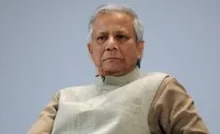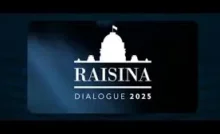Introduction
After a decade of warfare, the conflict Syria had settled into a violent, protracted stalemate and the country was in a humanitarian crisis: with an estimated 90 percent of Syrians living below the poverty line, and 60 percent being food insecure. Millions of Syrians had been displaced, with about 5.5 million in neighbouring countries while most of those involved in the initial anti-Assad protests were either dead, in jail or in exile. But, in spite of all this, the feeling was that President Basheer Al Assad was there to stay.
For more than half a century, the Assad dynasty appeared to have an impregnable hold over Syria. Relying on a formidable security apparatus, repressive use of force, and powerful allies like Russia, Iran, and Hezbollah. It had withstood multiple uprisings, and the regime had lost control of parts of the country in the civil war. But in recent years, Syrian President Bashar al-Assad, whose government had been sanctioned and sidelined from regional and international forums since 2011, had regained some of his standing, as the Arab League reinstated Syria and there was talk of sanctions relief.
Yet all that changed in a matter of days with a rare momentum of events. It is hard to overstate how incredible the collapse has been, given the history of the war in Syria. The stunning collapse of the 53-year Al-Assad family rule has been described as a historic moment nearly 14 years after Syrians rose in peaceful protests against a government that met them with violence. The situation in Syria has now dramatically shifted, radically altering the prevailing status quo.
The Chronology of Events
On 08 December, the Islamist rebels of the Hayat Tahrir al-Sham, the Syrian Liberation Group, or HTS took control of Damascus while Russia announced that Assad had taken refuge in Moscow. On 09 December HTS leader Abu Mohammad al-Jolani met with Prime Minister Mohammad Ghazi al-Jalali to “coordinate the transfer of power”. The entire affair had taken less than two weeks, with little bloodshed.
HTS is an alliance led by Al-Qaeda’s former Syria Branch and has faced accusations of human rights abuses including torturing detainees. The group is fighting alongside other factions, with units under a joint command. The lightning HTS offensive appears to have been pushed initially by Turkey, which had long protected the rebels in their stronghold in Idlib, in Northwestern Syria.
The astonishing sequence of events that allowed HTS to bring down the Syrian regime had many causes, including Israel’s decapitation of Syria’s ally Hezbollah and the destruction of much of the group’s missile arsenal, the erosion of Iranian power and influence due to the degradation of Hezbollah,” a breakdown in talks between Ankara and Damascus over reforms to the Assad government, Syria’s underpaid and demoralized Army, and Russia’s preoccupation with the war in Ukraine.
On 30 November, HTS took Syria’s second city, Aleppo, in a single day and swept Southwards to Damascus. As they did so, there were spontaneous rebellions against regime rule in Sweida and Daraa in the South and Deir Ezzour to the East. On 05 December they captured Hama, Syria’s fourth largest city; two days later, they took Homs, the third largest city, which lies on the road linking Damascus, to the regime’s Alawite heartland in the mountains looking over the Mediterranean coast. The rebels’ extraordinary momentum combined with the government’s drastically eroded base of support was far too great for the Assad regime to withstand.
A TECTONIC SHIFT
The rebels’ takeover of the country marks a tectonic shift in the Middle East. As recently as a few weeks ago, the Biden administration was working with the United Arab Emirates to lift sanctions against Syria in exchange for Assad distancing himself from Iran and blocking Hezbollah arms shipments, according to multiple sources who spoke to Reuters.
But the fall of Assad also shows how interconnected, and in unpredictable ways, the region’s various conflicts are, and the thinness of the membrane of normalcy that covers them. The Palestinian-Israeli conflict shared this fate. The sudden re-eruption of the Palestinian-Israeli conflict with Hamas’s 07 October attack led to Israel’s war in Gaza and Lebanon, the Houthis’ campaign in the Red Sea and a volley of attacks between Israel, Iran and Syria. Middle East’s protracted conflicts had all come to the fore.
Though questions are being asked about how the HTS will govern the country and manage various groups competing for influence but the fact is that the region has been transformed in more ways than one.
The Syrian war saw Russian intervention to prop up the Assad regime and expand its own military influence. For the first time, since the end of the Cold War, Russia was engaging in a major conflict outside of its “near abroad.” Russia has also cherished its access to its only warm-water port in Tartous on Syria’s Mediterranean coast as well as its control over the Hmemim airbase near Latakia, in Western Syria.
Since the summer of 2024, Israel’s offensive in Lebanon and attacks against Iran had dramatically weakened Iran and Hezbollah, Assad’s stalwart allies. Indeed, in addition to decimating the upper ranks of Hezbollah, Israel had degraded the group’s vast arsenal of Iranian rockets and missiles, and Israel continued to attack Iranian arms shipments to Hezbollah in Syria even after Israel and Lebanon declared a ceasefire on 27 November.
Israel taking advantage of the prevailing chaos has now attacked Syrian targets and seized control of a demilitarized buffer zone created as part of the ceasefire in 1974. It has captured Mount Hermon and attacked Syrian Naval assets. In other words it is doing all it can to take advantage of the flux.
At the same time, Erdogan, was losing patience with Syria’s refusal to compromise and reconcile with Turkey, and even Russian President Vladimir Putin, Assad’s close ally, was frustrated by the regime’s unwillingness to find some measure of accommodation with the opposition.
Meanwhile, HTS had evolved from its status as the Syrian branch of Al-Qaeda into an Islamist group that abjured transnational jihadism, centering its fight squarely on the Assad regime. Biding its time, it had made alliances with other groups, moderated its message, gained protection from Turkey, and established a civilian government in its area of control in Idlib, even as it ruled with an iron fist. During those years, the rebels never lost sight of their overarching goal: to depose Assad. Then, in early November, negotiations between Damascus and Ankara—over creating conditions that would allow Syrian refugees in Turkey to return home safely, which has become a driving issue for Turkey—fell apart again because of Assad’s intransigence, an event that may have led Erdogan’s government not to stand in HTS’s way when they decided to break out of Idlib a few weeks later.
Among the regional countries, Turkey has more influence over the future course of events in Syria, given its significant links with some of the rebel groups in control of certain areas in the country.
In the end, hardly any Syrians proved willing to sacrifice any more for this regime. The Syrian Armed Forces also did not put up more than token resistance for the most part, melted away.
On 06 December, Russia recalled its troops and diplomats. The fall of the Assad constitutes a major blow to Russia’s foreign policy and prestige. Not least among the setbacks is the prospect of possibly having to face the loss of its only overseas naval base, located in the port of Tartus which has strategic implications. It will not just undermine its influence in the Mediterranean and the Middle East, but will also impact its military power projection in the region.
With dwindling options, Iran also withdrew its militias, recognizing that fighting for Assad would be futile. In the East, Kurdish-dominated Syrian Democratic Forces (SDF) and Arab-led military councils struck deals with regime forces to seize regime-controlled areas of Deir Ezzour and, most significantly, the Albu Kamal crossing with Iraq, cutting off the regime’s supply lines from Iran and Iraq. As the rebels approached Damascus, remaining Russian, Iranian and regime forces also withdrew from their positions throughout the Northeast.
The Uncertain Future
Syria’s future is filled with uncertainty. Clashes are already ongoing between the Turkish-backed Syrian National Army (SNA) armed groups in the North and the Kurdish-dominated SDF backed by the US. Turkey and the US are both members of the NATO. While most Syrians are jubilant, including the millions of exiles who are beginning to find their way home from Lebanon, Turkey, and elsewhere, the fate of many Kurds expelled by Turkey previously from Afrin and other areas in the North is less certain. SDF General Mazloum has announced that his administration is pleased with the downfall of the Assad regime and his coordination with HTS, but the Kurds and Turkey will need to come to a compromise that does not unleash more bloodshed inside and outside Syria’s borders, a daunting challenge in the best of times.
HTS is a US designated terrorist group with little popularity in its home territory of Idlib. Thus far, its leader, Abu Mohammed al-Jolani has been careful to take a conciliatory stance, not just with Syria’s many minorities but also with former regime officials. The question of whether this tone will remain and whether other insurgent groups and opposition factions will follow his lead is another question. As more Syrians return to the country, including various opposition leaders, there will be inevitable tensions. Armed groups within Syria and the exiled opposition may struggle for power. For the moment, HTS appears to be pursuing an inclusive model of governance at the local level, bringing in minorities and those who never lived in opposition-controlled areas.
The political spectrum in Syria is also very delicate as the Syrian opposition is not a single entity. It is a coalition of groups with different backgrounds, sects, ideologies and approaches. The patchwork of forces moving around the country is complex. Further, the HTS is listed as a US Foreign Terrorist Organisation and Jolani’s is a ‘Specially Designated Global Terrorist’, with a $10 million bounty.
Conclusion
The rebel offensive was possible, in part, because of dynamics beyond Syria’s borders. But transition is never easy in a fractured political environment with a complex mosaic of groups with diverse ideologies and interests. The involvement of external forces will be a strong factor in how things develop in post-revolution Syria.
To secure a stable and unified country, regional and international support will be needed to establish a civilian government, encourage reconciliation and start rebuilding the country.
The world has previously witnessed the fall of Arab regimes in Egypt, Tunisia, Libya and Iraq but the stability, governance and development that was expected in most of these countries post regime change has not been reassuring.
At present, the HTS nature and intentions regarding maintaining a secular country can also not be taken at face value. The political alignment of HTS, and whether it has renounced the ideology of its AQ affiliated roots, is the immediate challenge in an already uncomfortably complex outlook.
Along with the legacy of years of international sanctions and economic mismanagement, the prospect of a new civil war and yet further instability across the region cannot be discounted with Syria being a foot hold for extremist groups.
While the prevailing mood may be celebratory but unfortunately the deserts are full of mirages and the future is unwritten, hence an inclusive, secular, democratic Syria with good governance may still be elusive.





